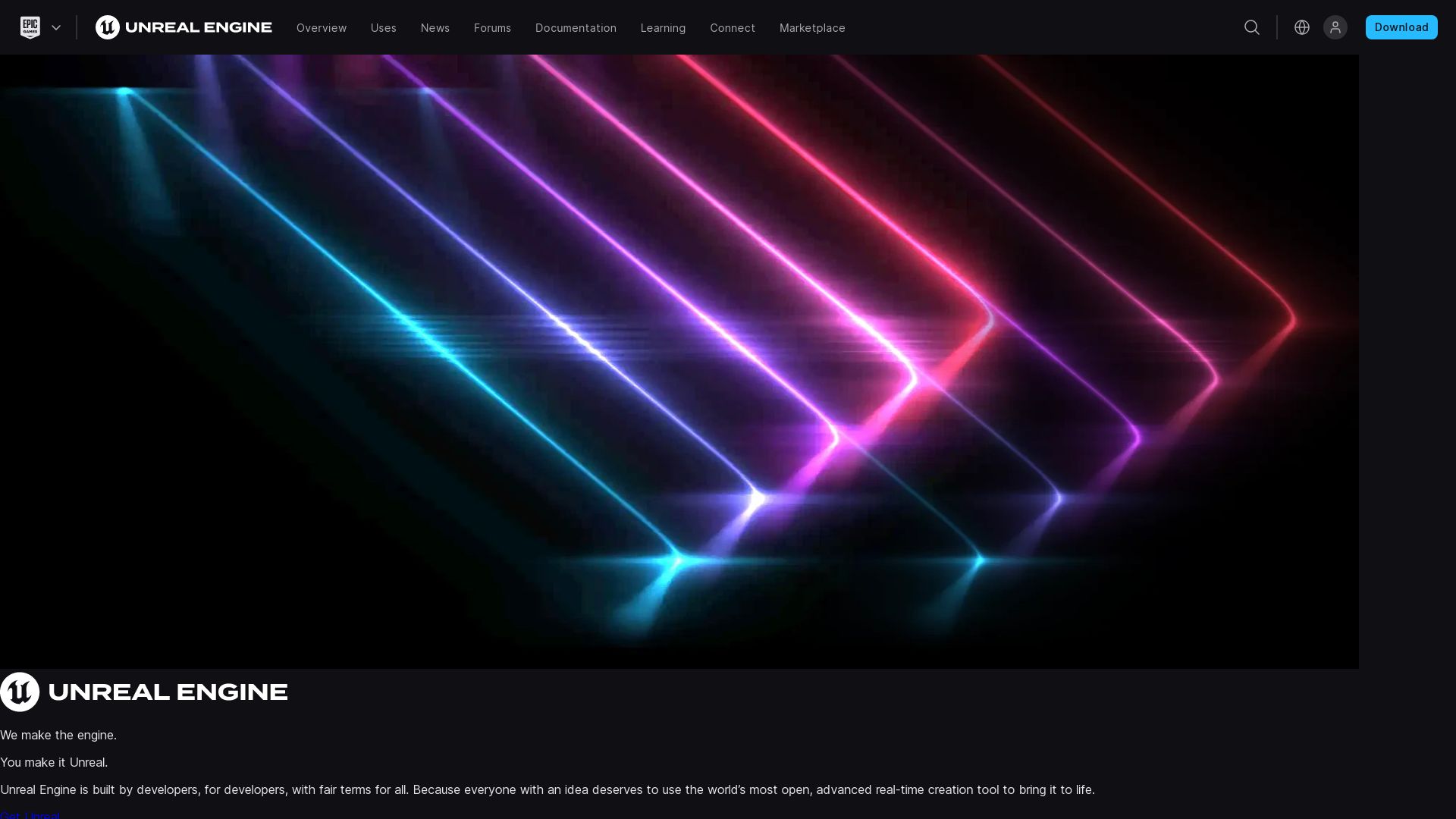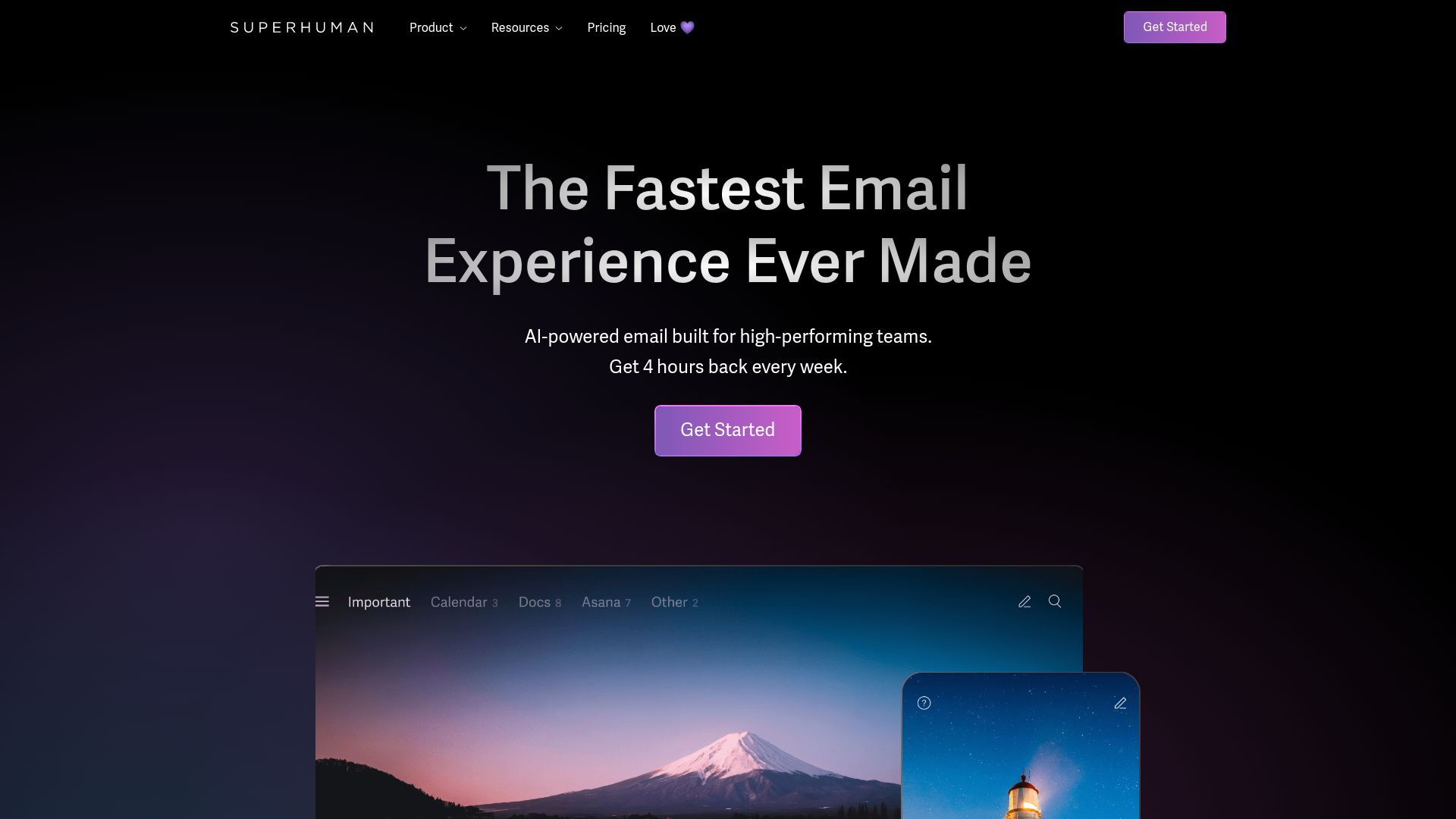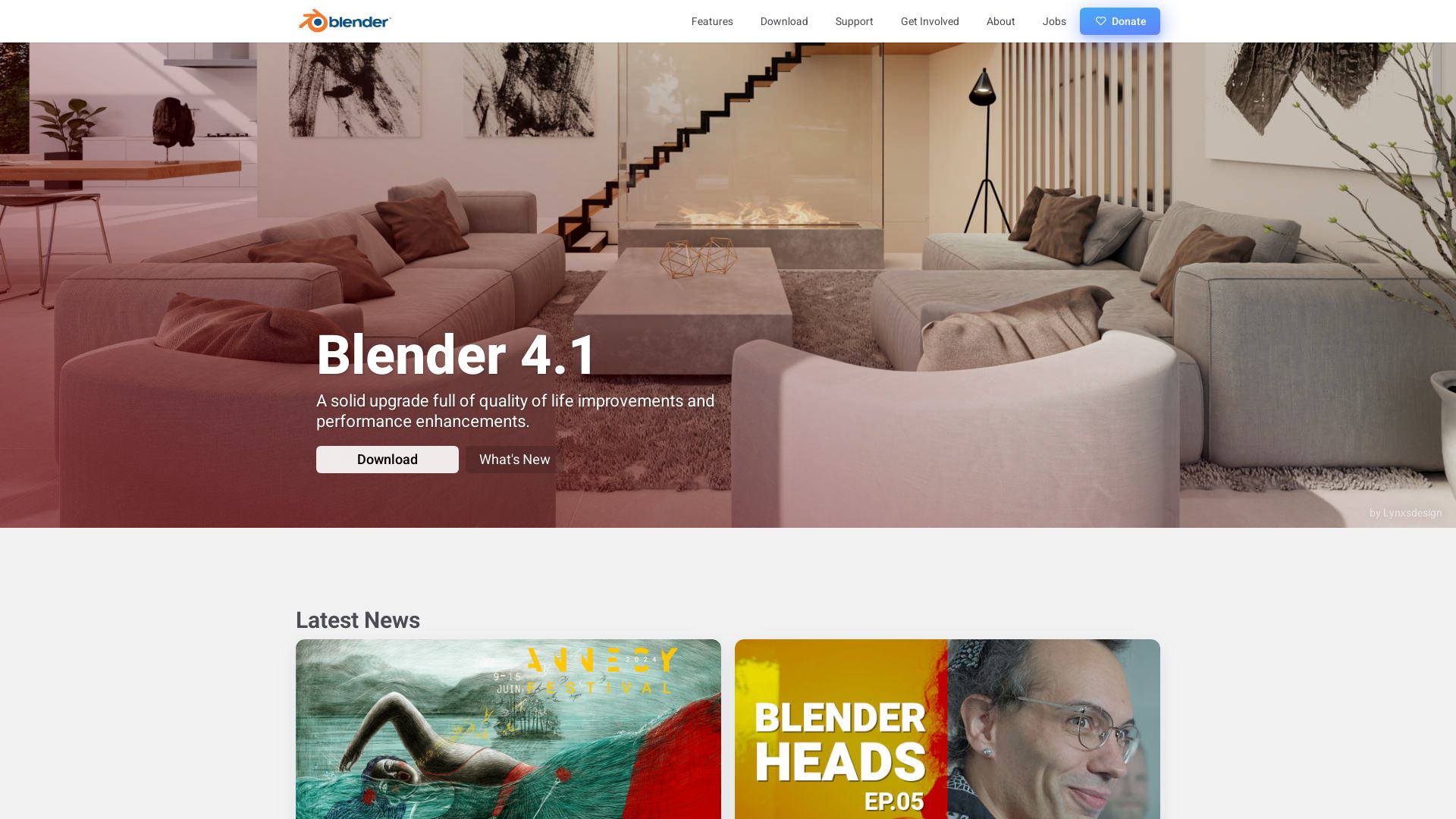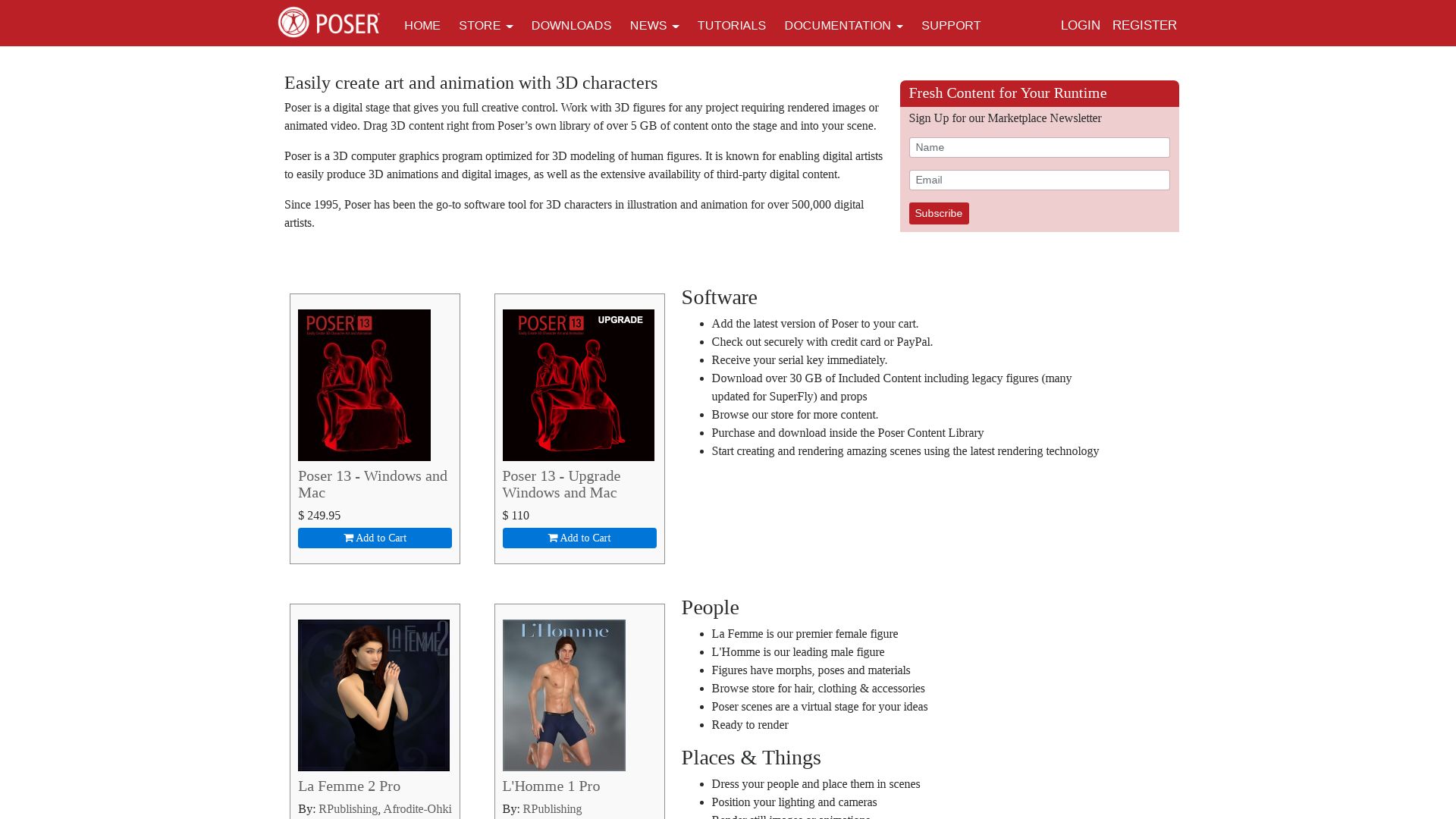MetaHuman, a company known for individuals with enhanced traits like strength, speed, and senses, connected to the genetic variant ‘metagene’ and boasting 1.3 million metahumans globally.

To venture beyond MetaHuman, consider options such as Unreal Engine, Maya, MotionBuilder, Blender, Reallusion, iClone, Daz 3D, MakeHuman, MB-Lab, Poser, CC4, Mutant, or Superhuman.
Unreal Engine

Established by Epic Games, Unreal Engine has been a game changer in the realm of 3D computer graphics since 1998. Its versatile nature enables usage across miscellaneous game genres, industries and platforms, from PCs to mobiles and VR.
Unreal Engine Top Features
- Employs constructive solid-geometry operations via its level editor, UnrealEd.
- Unreal Development Kit (UDK) allows creation of iOS games and apps.
- Enhanced features from acquisitions such as Quixel.
- Revenue-sharing Marketplace empowering content creators with 88% share.
- Offers robust project templates for first-person or third-person experiences.
| Feature | Detail |
|---|---|
| Latest Version | Unreal Engine 5 (UE5) released in April 2022. |
| Programming Language | C++. |
| License | Free for schools and universities. 5% royalty for commercial use. |
Unreal Engine Disadvantages
- Royalty model can be costly for commercial users.
- C++ programming learning curve for new users.
- UE4’s SDK, although powerful, was presented 18 months into development.
Unreal Engine Pricing
While freely available to all users, products that rake in more than $3,000 per quarter will face a 5% royalty charge. However, this fee is waived for games published on the Epic Games Store.
Unreal Engine Use Cases
Use case 1: Game Development
From first-person shooters to console and VR games, Unreal Engine can support an array of gaming genres and platforms.
Use case 2: Content Creation
Its marketplace and revenue-sharing model make Unreal Engine a favored choice for content creators and developers.
Use case 3: Academic Institutions
With a cost-free license for schools and universities, Unreal Engine has become a popular tool in computer science and game design courses.
Maya
Meet Maya. Originally christened by Alias and now nurtured by Autodesk, Maya stands out as a proficient 3D computer graphics application. Used globally for crafting assets in interactive 3D applications, animated films, and visual effects, it’s renowned for its flexibility on Windows, macOS, and Linux platforms.
Maya Top Features
- 2D drawing and 3D modeling capabilities, complete with annotations, constraints, and analysis functionalities.
- Groundbreaking animation simulation with the ability to craft movements, deformations, and unique effects.
- NURBS modeling system for the creation of sophisticated, intricate shapes.
- Advancements like global illumination and subsurface scattering, thanks to the integrated renderer, Mental Ray.
- Superior texturing, shading, lighting, and a matchless rigging system.
- Direct importing of assets to popular game engines like Unreal Engine and Unity.
| Customizable User Interface | Robust and tailor-made, based on specific requests from Disney. |
| Maya Embedded Language (MEL) | Replaced Tcl as the scripting language for improved functionality. |
| Open Architecture | Makes Maya a preferred choice in the animation industry. |
Maya Limitations
- Less beginner-friendly due to the intricacy of functionalities.
- Intensive in terms of system resource usage.
Maya Pricing
Maya offers different pricing structures for varying needs, including monthly/yearly subscriptions, and a free educational version. There’s a lower fee for businesses that earn under $100k.
Maya Use Cases
Film Industry
Used extensively in movies like Spider-Man, Star Wars series, and more for high-quality visual effects and animations.
Game Development
With the ability to import assets directly into top engines like Unreal and Unity, Maya is a go-to for developers in the gaming arena.
AR/VR Content Creation
The detailed modeling feature helps craft immersive and interactive 3D experiences for AR/VR environments.
CC4
CC4 is an innovative platform, redefining the landscape of character animation with its potent AccuRIG technology. Designed to overcome rigging challenges, it breathes life into static models, transforming them into dynamic, animation-ready characters.
CC4 Top Features
- Enhanced subdivision export and levels of detail (LODs) boost real-time performance while retaining visual quality.
- Advanced AccuRIG feature simplifies rigging for humanoid models, including complex multi-mesh structures.
- The 3-step auto-rig process adapts even non-rigged characters.
- CC avatars created retain original facial bones and animations.
- High-res characters suitable for film production, extreme closeups, and downgraded versions can be produced.
- Compatible with all render engines, ensuring precision in rendering of facial morphs.
| Auto detection for imported character types | Supports Maya HumanIK, 3ds Max Biped, Blender Meta-rig, Mixamo characters and motions, Daz3D G3/G8 characters and motions |
| Blendshape import and assignment | Enhanced facial animations and lip-sync with iC8 AccuLips |
| Content Support | Purchased and community-generated content through marketplace |
CC4 Limitations
- Specific licensing requirements for mass distribution of games with purchased content.
- Use of purchased content from the Reallusion stores may require an Extended License.
CC4 Use Cases
Use case 1: Character Design
For creatives in the realm of character design, CC4 offers the luxury of compatibility and flexibility, advancing storytelling options and creative possibilities.
Use case 2: Game Development
CC4’s capabilities are a boon for game developers aiming to incorporate dynamic and detailed characters, boosting overall game aesthetics and player experience.
Use case 3: Portfolio Presentation
The Turntable feature of CC4 plays a pivotal role in enhancing character display, proving beneficial for portfolio presentations or showcases.
Mutant

Born from the creative minds of Stan Lee and Jack Kirby, Mutant embodies the human evolution in Marvel comics. Centered around humans possessing the unique X-gene, which unveils superhuman abilities at puberty, the concept of Mutants has been an integral part of Marvel’s narrative.
Mutant Top Features
- Origin as a term in Marvel Comics – credited to Stan Lee and Jack Kirby, creators steeped in the lore of the comic book universe.
- Development and evolution of the concept over the decades, from Namor the Sub-Mariner to a 2022 storyline related to the Deviant race.
- Association with various super teams, providing a rich tapestry of stories and connections in the Marvel universe.
- Inclusion of Omega-level mutants, representing the most powerful genetic potential of abilities.
| Key Mutant Feature | Benefit |
|---|---|
| X-Gene | Unique trait igniting superhuman abilities. |
| Evolutionary Stage | Depicts the next evolution in humanity, Homo Superior. |
| Omega-level mutants | Harbors powerful abilities offering advantageous prowess in stories. |
Mutant Limitations
- Propensity for mutations to manifest during adolescence, which possibly entails early exposure to dangers and an inability to handle powers responsibly.
- Select mutants manifest from birth or adulthood, causing a shift in lifestyle or role in society.
- The threat from Eternals’ leader Druig to extinguish mutants indicates a constant peril to their existence.
Mutant Use Cases
Use case 1: Comic Book Enthusiasts
A treasure trove for comic book enthusiasts, the mutant landscape offers intricate storylines and diverse characters to explore.
Use case 2: Illustrators and Writers
For illustrators and writers seeking to delve into the rich lore of comic book characters, mutants provide a well of creative inspiration.
Use case 3: Fans of Evolutionary Concepts
Mutants’ evolution narrative serves as a thought-provoking base for fans interested in the amalgamation of biology and fantasy.
Superhuman

Embark on a journey beyond human abilities with Superhuman. This initiative pushes the boundaries of human capabilities, fusing philosophy, science, and bioethics to create beings that transcend normal human physical and mental limits.
Superhuman Top Features
- Pursues human enhancement through genetic or cybernetic modification
- Actively collaborates with advancements in artificial intelligence
- Emphasizes the importance of bettering individual and cultural health, creativity, and power
- Integrates philosophies of unity between God, nature, and man
- Applies real-life superhuman feats as seen in athletics and scientific studies
| Feature | Benefit |
|---|---|
| Fusion of philosophical ideologies and technological enhancements | Aims at transcending the normal boundaries of human physical and mental capabilities |
| Collaboration with AI advancements | Potential for creating supremely intelligent beings |
Superhuman Limitations
- Major involvement in controversies like coercive eugenics and controlled breeding
- Involvement of performance-enhancing drugs, a debatable ethical issue
- Risks associated with genetic engineering
Superhuman Pricing
Superhuman is not a product but a philosophical and scientific concept; hence, no pricing is associated.
Superhuman Use Cases
Use case 1: Athletics
Superhuman abilities can be seen in athletics where athletes perform at unattainable levels due to a mix of superior genetics, rigorous training, and mental conditioning.
Use case 2: Transhumanism
The philosophy and techniques of Superhuman have significant implications in the field of transhumanism which aims at enhancing human intellect and physiology.
Use case 3: Artificial Intelligence
Superhuman collaborates with advancements in AI to propose a future where superhuman feats are enabled through technological innovation, thereby expanding the realm of possibilities for the human race.
MotionBuilder
Manufactured by renowned company Autodesk, MotionBuilder is a dependable player in the realm of 3D character animation software. It’s equipped with an array of features designed for motion capture, virtual cinematography, and traditional keyframe animation, catering to both tech companies and individual developers.
Top Features of MotionBuilder
- Extensive Motion Capture Data Management: Harness the power of production-proven tools, backed by a software development kit and an FBX data exchange system for smooth links with other 3D applications.
- Real-time 3D Character Engine: Craft realistic and high-quality animations with a wide selection of prebuilt moves, perfect for human skeleton movements.
- Interactive Environment: Experience an optimized workflow that accelerates projects without stifling creativity.
| Feature | Benefit |
|---|---|
| Data Exchange | Smooth interoperability with other 3D tools like Maya, 3ds Max. |
| Trusted Brand | Used by top companies for high-quality animation production. |
| Learning Hub | Perfect for budding animators aiming to master 3D character animation. |
MotionBuilder Limitations
- Licensing Restrictions: The absence of perpetual licensing implies a constant subscription.
- Installation Limitation: Subscription allows only up to three device installations.
MotionBuilder Pricing
A subscription to MotionBuilder comes at the annual cost of about $1,950. This gives users complete access to the suite of capturing, editing, and playback tools for complex animations.
MotionBuilder Use Cases
Use Case 1 – Game Development
An optimal choice for game developers. Its intricate animation capabilities and realistic prebuilt moves facilitate the creation of engaging game characters.
Use Case 2 – Advertising
Used by major companies like Ford Motors and Coca-Cola for crafting compelling animated advertisements, ensuring marketing communication is effective and memorable.
Use Case 3 – Filmmaking
MotionBuilder is widely used for animating characters in films and TV shows, playing a critical role in crafting lasting, high-definition shots that elevate the viewers’ experience.
Blender

An all-in-one 3D computer graphics software toolset, Blender has carved itself a niche in the creative world. Originating from the Netherlands and created by the animation studio, NeoGeo, Blender has been a game-changer since its launch on January 2, 1994. Today, it stands as a free and open-source platform backed by a passionate community and a dedicated institute.
Blender Top Features
- 3D Modelling: Construct and manipulate 3D objects with precision and flexibility.
- UV Mapping and Texturing: Apply detailed surfaces and patterns to your 3D models.
- Animation & Rigging: Bring your models to life with sophisticated animation tools.
- Sculpting: Create intricate details with Blender’s digital sculpting toolset.
- Rendering: Produce stunning visuals with Eevee, a high-end renderer integrated in Blender.
- Video Editing & Compositing: Edit scenes and aggregate visual effects directly within the Blender workflow.
| Advanced Features | Description |
|---|---|
| Particle Simulation | Create complex effects like fire, smoke, or fluids. Ideal for realistic environmental elements. |
| Match Moving | Blend 3D content with video footage for seamless visual effects sequences. |
| Soft Body Simulation | Enable dynamic simulations for soft objects like cloth or soft tissues, enhancing realism in animations. |
Blender Limitations
- Steep learning curve, especially for beginners without prior 3D design experience.
- High computational requirements for rendering complex scenes.
- Depreciation of the Blender Game Engine after the 2.8 release.
Blender Pricing
Emerging as a beacon of accessibility in the 3D software landscape, Blender is completely free, promoting innovation without financial barriers.
Blender Use Cases
Use case 1 – Animated Films
With its wide range of tools, Blender is perfect for creating detailed and visually stunning animated films.
Use case 2 – Visual Art
Artists and illustrators can use Blender’s robust sculpting and texturing tools to bring their creations to life in three dimensions.
Use case 3 – Virtual Reality
Blender offers a canvas for VR developers to design immersive experiences, from game environments to interactive spaces.
Reallusion
Reallusion is a renowned entity in the realm of AR/VR with its impressive iClone software. Combining facial performance, character animation, mocap production, scene design, and storytelling, iClone streamlines 3D animation creation.
Reallusion Top Features
- Accurate interaction tools alongside mocap cleanup and motion editing.
- A unique wrinkle-blending system for lifelike characters.
- Realtime production encompassing lighting, shadow, camera systems, props, scene elements, realtime visuals, and project productivity features.
- Seamless integration with other 3D apps.
- An enormous library featuring premium characters, morphs, skin, outfits, and more.
- Ability to capture live dances remotely.
| Feature | Description |
|---|---|
| iClone 8 vs iClone 7 | iClone 8 enhances the offering with features like FK/IK editing, motion blending, transition curve preset, look-at constraint, reach constraint, and more. |
| File Formats Supported | Supports a range of formats including OBJ, FBX, Alembic Animation, iAvatar, iCloth, iShoes and others. |
| Export Formats | Provides various export options: OBJ static mesh, FBX (Bone Rig, Animation, Blendshapes), Alembic (ABC), Omniverse (USD). |
Reallusion Limitations
- Price point on the higher side.
- Learning curve may be steep for beginners.
Reallusion Pricing
iClone 8 is priced at $599, a package inclusive of partial 3DXchange Pipeline integration, Curve Editor, and Motion LIVE.
Reallusion Use Cases
Use Case 1: Music Videos
Reallusion’s ability to capture live dances remotely made it a vital tool for music video production during the 2020 lockdown.
Use Case 2: Game Development
With seamless integration to other 3D apps, Reallusion’s iClone is an indispensable resource for game developers looking for a design-to-animation character platform with a vast library of elements.
Use Case 3: Animation Studios
Offering a wrinkle-blending system and a wide array of realtime production features, iClone is a boon for animation studios aiming for more lifelike character depiction and efficient scene setups.
iClone
iClone is a versatile real-time 3D animation and rendering software. Tailored to meet the needs of professionals across industries including films, previz, animation, and video games, iClone offers a user-friendly production environment that blends character animation, scene design, and cinematic storytelling. It has the capability to animate any character effortlessly with facial muscle-based control, accurate lip-sync, and iPhone facial capture.
iClone Top Features
- Simplistic user interface with drag-n-drop feature for ease of use and scene organization
- Supports import/export of popular industry file formats like FBX, OBJ, BVH
- Integration with leading software such as Maya, Omniverse Audio2Face, Blender, MetaHuman Creator
- Allows users to produce customizable cartoon bodystyle avatars and 3D facial control systems
- Features like real-time particle animation, media compositing, post FX, etc. are available
- Enables creation of expansive worlds, complex characters, and dazzling effects.
| Feature | Benefit |
|---|---|
| Real-time 3D Animation | Faster workflow and instant visualization |
| Omniverse Live link | Create blendshapes for Blender and Unreal Engine |
| PBR support via 3DXchange 7 | Enables export/import of additional characters, cameras, character morphs |
| Reallusion Content Store | Access to numerous premium assets and content |
iClone Disadvantages
- Price is on the higher end, may not be accessible for hobbyists or indie developers.
- Limited learning resources available.
- A software upgrade is often required to get the full feature set.
iClone Pricing
iClone is priced at $599, including partial 3DXchange Pipeline integration, the Curve Editor, and Motion LIVE. Users can also purchase additional content from the Reallusion Content Store for iClone.
iClone Use Cases
Use case 1 – Video Game Development
iClone’s simulation features make it ideal for video game developers. With the ability to import/export common industry file formats, iClone allows rich character animations and scene creations.
Use case 2 – Film and Animation
iClone aids in the production of animations for films through character animation, scene design, and cinematic storytelling, and the ability to seamlessly manipulate facial expressions and body animations.
Use case 3 – Education, Industry, and Business
iClone is instrumental as a 3D simulator for education, industry, and business spaces. The software facilitates understanding of complex principles in a straightforward, visual way.
Daz 3D
Established in 2000 in Salt Lake City, Utah, Daz 3D specializes in providing rigged 3D human models and accessory content. Daz 3D offers an impressive library of over 5 million assets designed for the hobbyist to professional consumer market.
Daz 3D Top Features
- Extensive library of over 5 million assets.
- Genesis Platform for character creation with morph capability.
- Daz Bridges tool for content transfer to third-party applications.
- dForce physics for simulating natural cloth/hair.
- Range of human figures and characters available.
| Feature | Description |
| Genesis Platform | Allows figures to morph from base mesh creating variety of shapes and sizes. |
| Daz Bridges | Transfers Daz 3D content to 3rd party applications-3DS Max, Maya, Mudbox, Blender, Cinema 4D, Unity, Unreal Engine among others. |
| dForce physics | Simulates natural cloth/hair, adding realism to 3D models. |
Daz 3D Limitations
- Reduced backward compatibility in recent Genesis updates.
- License-based pricing model, requiring regular purchases.
Daz 3D Pricing
Daz 3D operates on a license-based pricing model. Whilst the core product is free, additional assets and features come at a price. This model may suit some users whilst others might prefer a one-off purchase or subscription service.
Daz 3D Use Cases
Use case 1
Being free and equipped with advanced features, Daz 3D is highly beneficial for professionals working in film, TV, animation, and video game development who require consistent access to top-tier 3D modelling tools.
Use case 2
Daz 3D can also be used in web design and print illustrations needing detailed, high-quality 3D models. Its comprehensive library and morphing capabilities cater to custom design requirements, making it a versatile tool in the digital art sphere.
MakeHuman
Emerging as a powerful open-source tool, MakeHuman is specifically designed for creating diverse realistic 3D human characters, quickly and efficiently.
MakeHuman Top Features
- Parametric Modeling: Achieve a higher degree of control to create characters meeting exact form and proportion needs.
- Integrated Export Options: Seamlessly export creations to Blender, Autodesk Maya, 3ds Max, Cinema4D, Unity, and other game engines.
- Pose/Animate Features: Easy manipulation of bone structure for effortless character posing.
- Optimized Mesh Models: Create sophisticated models ideal for subdivision surfaces modeling.
| Feature | Benefit |
|---|---|
| UV customized Models | Expedite 3D Artist work |
| Advanced Libraries | Rapid character creation via skin, eye color, cloth options |
| Accessible on Major OS | Works on Python for wide compatibility |
MakeHuman Disadvantages
- Lacks fully comprehensive rigging.
- Limited in advanced texture and material options.
MakeHuman Pricing
MakeHuman is an open-source tool available for use at a starting price of $2 per month.
MakeHuman Use Cases
Use case 1: Game Development
MakeHuman enables the quick creation and easy manipulation of diverse 3D characters maximising productivity in game development pipelines.
Use case 2: Academic Research
For academia, MakeHuman serves as a practical tool in fields like biomechanics, facial expressions studies, and more.
Use case 3: Industrial Design & Virtual Reality
In both industrial design and VR research, MakeHuman’s parametric modeling allows precise, photorealistic humanoids prototyping.
MB-Lab
An innovation born in 2016, MB-Lab has become a significant entity in the Game Development Engines realm. Crafted with the soul of an artist’s touch and a programmer’s precision by Manuel Bastioni, this free, open-source Blender plug-in seamlessly blends photorealistic 3D human character modeling into an intuitive GUI.
MB-Lab Top Features
- Combines the prowess of consolidated algorithms with extensive graphic project experience
- Furnished with lab tools for body/face details, animation, proxies, poses, and skin/eye shaders
- Employs advanced mathematical models such as 3D morphing, fuzzy mathematics & non-linear interpolation
- Runs on Python, compatible with Windows, macOS, and Linux
- Provides a versatile human phenotypes library for volumetric modelling
- Allows for the creation of Non-human models, including Anime, Elves
| Version | Standout Features |
|---|---|
| MB-Lab 1.7.5 | Stable build for Blender 2.80 with improved eye/iris shaders and new GUI |
| MB-Lab 1.7.8 | Enhancement: Custom character option, shader networks for Eevee/Cycles |
MB-Lab Limitations
- Available morphs do not include genitalia, which could limit the depth of human model detailing
- Mostly designed for Blender 2.8 and 2.79, limiting its compatibility with other platforms
MB-Lab Pricing
As a champion of accessibility and creative freedom, MB-Lab is open source and completely free. It operates under the standard licenses of the Free Software Foundation.
MB-Lab Use Cases
Use case 1: Virtual Reality and Gaming
MB-Lab’s photorealistic models, customizable through 470 morphs per character, make it an ideal tool for game developers and VR visionaries.
Use case 2: Animated Film Making
With human and non-human model variations, MB-Lab caters for creatives in the animation industry, offering them a diverse toolbox for character modelling.
Use case 3: Education and Research
Institutions exploring animation technology or digital arts can utilize MB-Lab, to help students or researchers understand modeling intricacies.
Poser

Immerse yourself in the empowering world of 3D character creation and animation with Poser, a sophisticated software tool produced by Bondware. Renowned for its capability to render lifelike human figures, Poser caters to diverse professionals globally, fostering innovation in areas ranging from broadcast animation and interactive media to gaming and medical visualisation.
Poser Top Features
- Powerful Design Features: Axed around realistic portrayal of human forms, Poser provides an extensive library of pre-rigged human, animal, robotic, and cartoon figures. With a vast array of poses, hairpieces, and props offered, creativity comes seamlessly.
- Advanced Animation Tools: Facilitates non-linear animation with automatic keyframe creation, lip syncing and a walk simulator. Poser also embraces dynamic props and bullet physics, taking animations up a notch.
- Effective Rendering Tool: Flaunts exceptional lighting tools that partner with rendering options, enabling artistic effects from photorealistic styles to cartoons and silhouettes.
- Multi-Language Support: Poser’s interface is available in key global languages-English, Japanese, German, French-for easier reach and usage.
| Feature | Description |
| Compatibility | Compatible with Microsoft Windows and Mac OS X operating systems |
| Expandable Content Library | Your creative arsenal can be expanded with more collections, referred to as “Runtimes”. |
| Premier 3D Rendering & Animation Software | Poser has evolved over several versions, becoming recognized as a principal software for 3D rendering and animation. |
Poser Limitations
- May require more advanced computing hardware to efficiently use all features.
- Some users might need time to adapt to its various functionalities, considering it comes with a generous feature set.
Poser Pricing
Poser is priced at a one-time payment of $249.95, providing unlimited access to its reservoir of features. For the seekers of added functionalities, Poser 12 Pro is available at a striking 75% discount.
Poser Use Cases
Use case 1 – Film Making
Because of Poser’s power in creating lifelike human figures and seamlessly blending them into different environments, it’s widely appreciated in the film industry. Professionals can directly drag and drop 3D content from Poser’s library to their scene, making it easier to create compelling, realistic visuals.
Use case 2 – Education
In educational settings, complex concepts can be imparted more engagingly using Poser’s 3D figures and animations, making this tool highly beneficial.
Use case 3 – Advertising
Advertisers can begin leveraging Poser to create eye-catching, realistic visuals that hold the power to captivate their target audiences more effectively.
Logan Bellbrook
Content writer @ Aircada with a knack for nature & AR/VR/XR. Blogging the intersection of tech & terrain.





